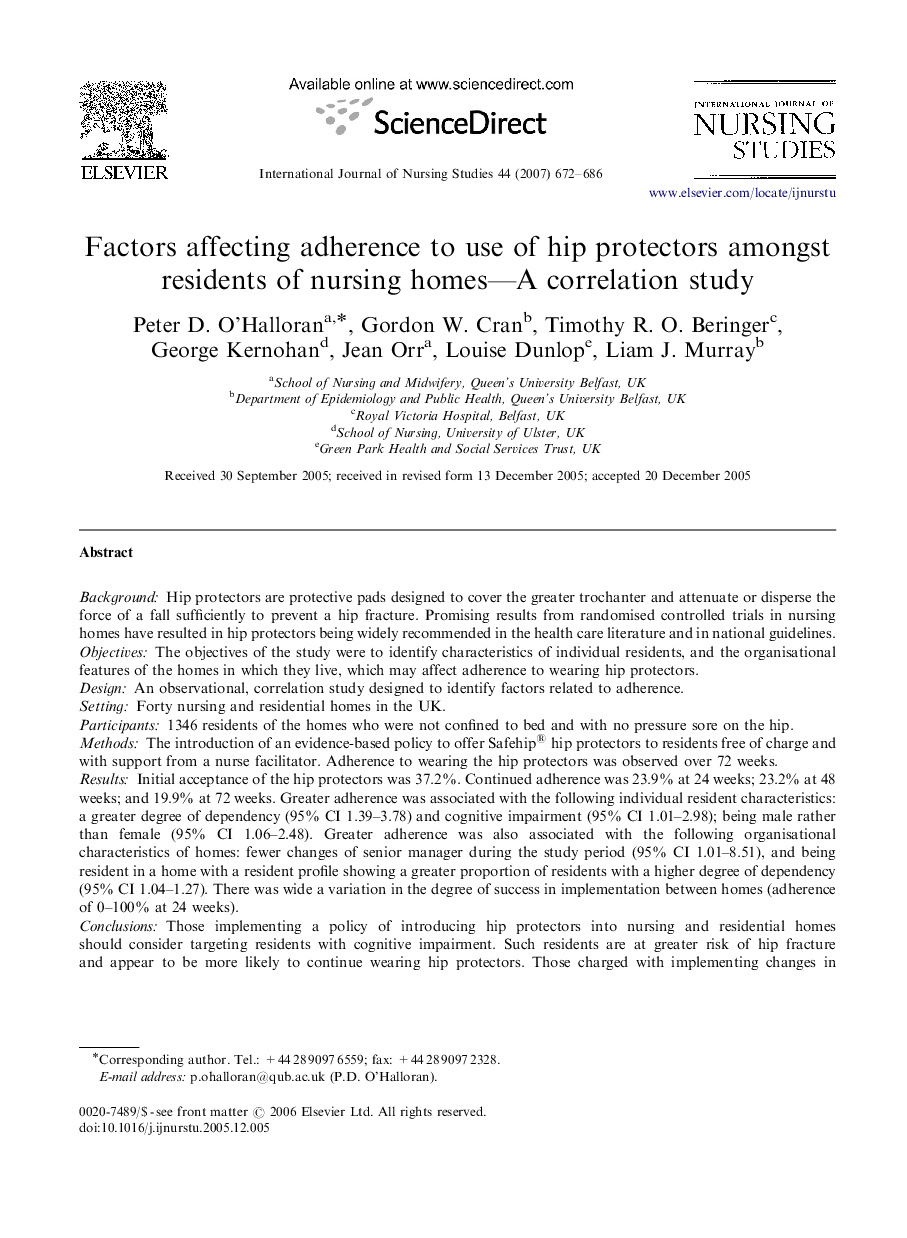| کد مقاله | کد نشریه | سال انتشار | مقاله انگلیسی | نسخه تمام متن |
|---|---|---|---|---|
| 1077436 | 1486616 | 2007 | 15 صفحه PDF | دانلود رایگان |

BackgroundHip protectors are protective pads designed to cover the greater trochanter and attenuate or disperse the force of a fall sufficiently to prevent a hip fracture. Promising results from randomised controlled trials in nursing homes have resulted in hip protectors being widely recommended in the health care literature and in national guidelines.ObjectivesThe objectives of the study were to identify characteristics of individual residents, and the organisational features of the homes in which they live, which may affect adherence to wearing hip protectors.DesignAn observational, correlation study designed to identify factors related to adherence.SettingForty nursing and residential homes in the UK.Participants1346 residents of the homes who were not confined to bed and with no pressure sore on the hip.MethodsThe introduction of an evidence-based policy to offer Safehip®Safehip® hip protectors to residents free of charge and with support from a nurse facilitator. Adherence to wearing the hip protectors was observed over 72 weeks.ResultsInitial acceptance of the hip protectors was 37.2%. Continued adherence was 23.9% at 24 weeks; 23.2% at 48 weeks; and 19.9% at 72 weeks. Greater adherence was associated with the following individual resident characteristics: a greater degree of dependency (95% CI 1.39–3.78) and cognitive impairment (95% CI 1.01–2.98); being male rather than female (95% CI 1.06–2.48). Greater adherence was also associated with the following organisational characteristics of homes: fewer changes of senior manager during the study period (95% CI 1.01–8.51), and being resident in a home with a resident profile showing a greater proportion of residents with a higher degree of dependency (95% CI 1.04–1.27). There was wide a variation in the degree of success in implementation between homes (adherence of 0–100% at 24 weeks).ConclusionsThose implementing a policy of introducing hip protectors into nursing and residential homes should consider targeting residents with cognitive impairment. Such residents are at greater risk of hip fracture and appear to be more likely to continue wearing hip protectors. Those charged with implementing changes in practice or policy should consider how the context for implementation can be optimised to increase the likelihood of success.
Journal: International Journal of Nursing Studies - Volume 44, Issue 5, July 2007, Pages 672–686